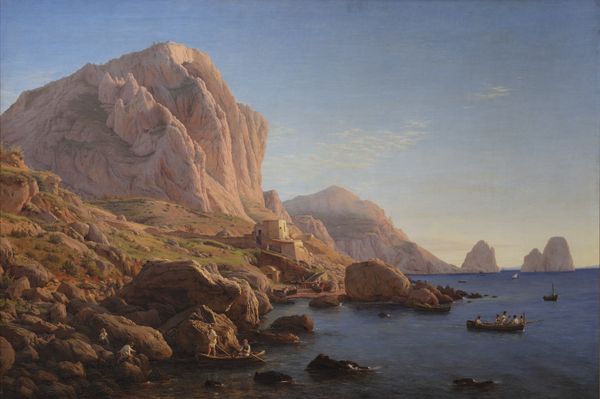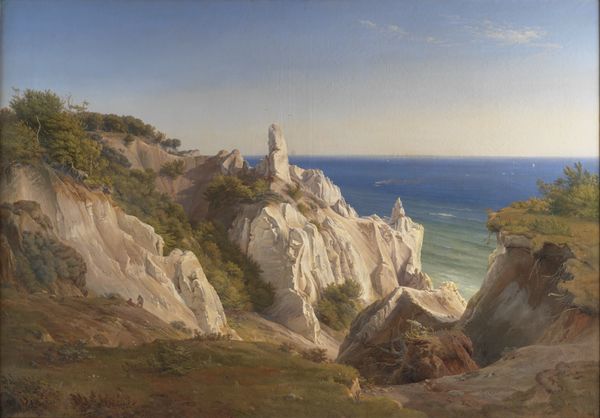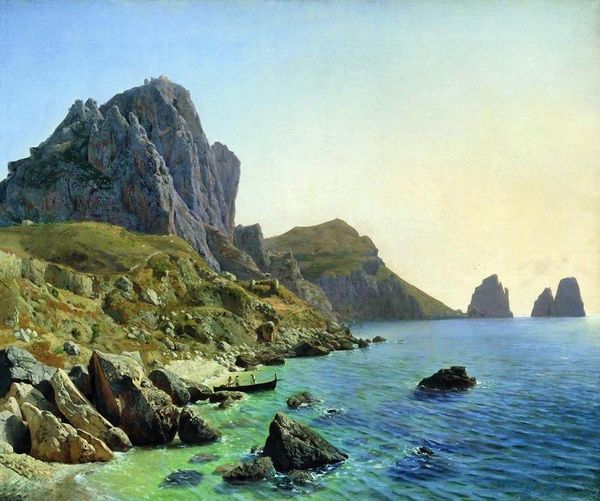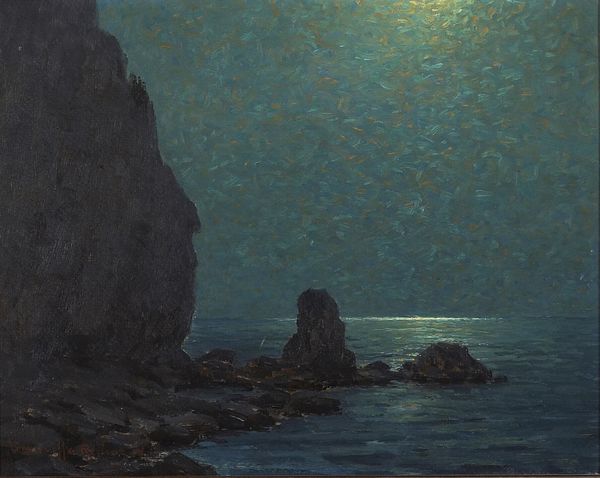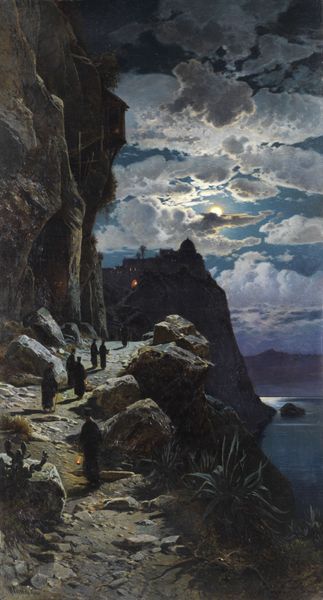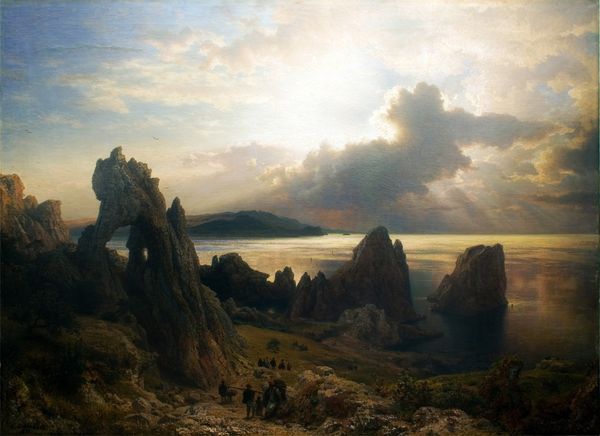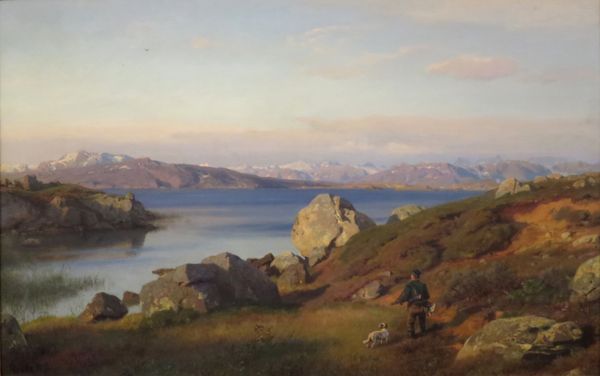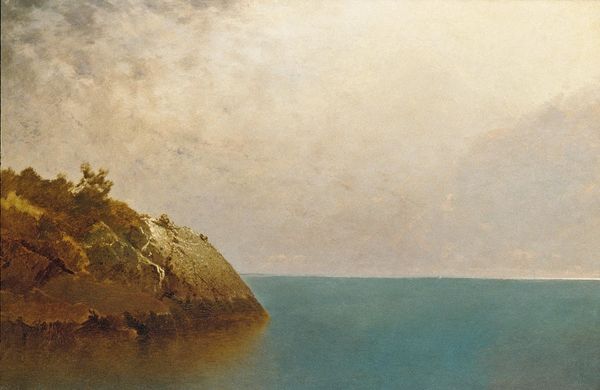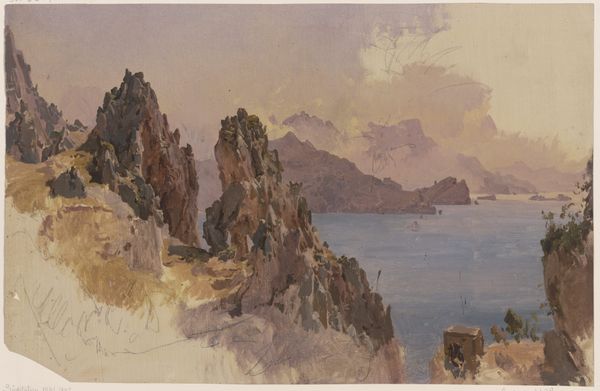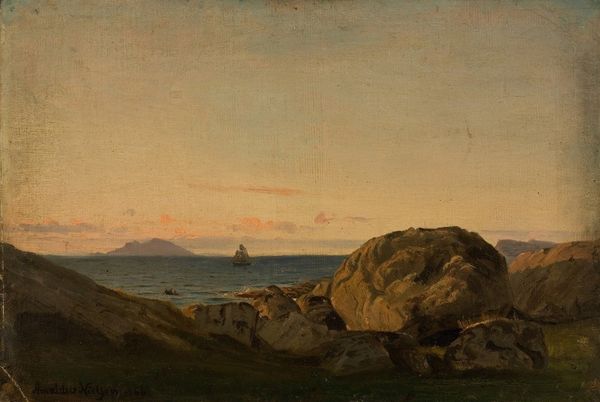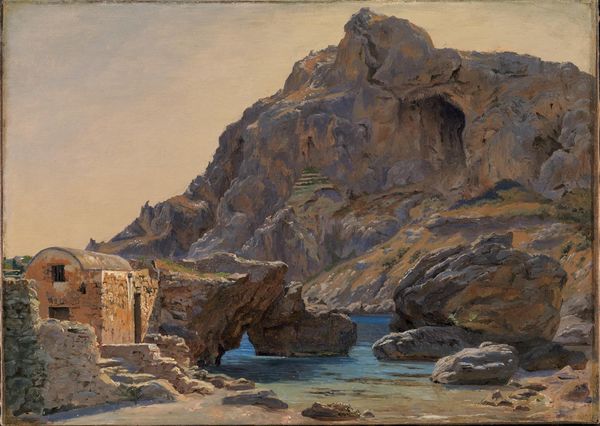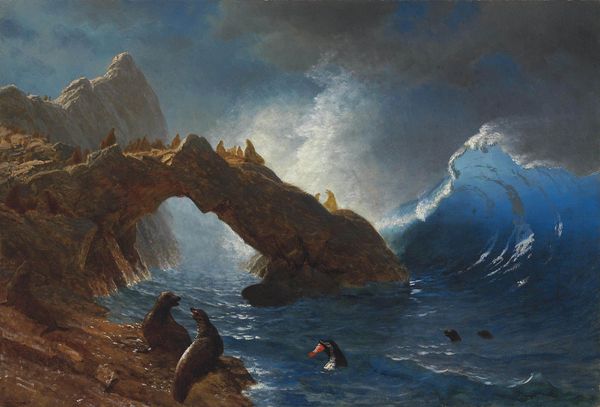
Dimensions: overall: 86.4 x 139.7 cm (34 x 55 in.) framed: 123.2 x 174 x 14 cm (48 1/2 x 68 1/2 x 5 1/2 in.)
Copyright: National Gallery of Art: CC0 1.0
Editor: We're looking at "Natural Arch at Capri," painted by William Stanley Haseltine in 1871 using oil paint. I'm immediately struck by the contrast between the cool blues of the water and the warm tones of the rock formations; what a beautiful scene. What strikes you most about this piece? Curator: It’s interesting to consider Haseltine’s work within the context of the Hudson River School, despite him painting in Italy here. The dramatic lighting and detailed rendering of natural forms were central to their artistic project – romantic nationalism. Do you see that at play here? How does painting a European landscape speak to this agenda? Editor: I can see that connection, certainly in the way the light seems to dramatize the landscape. Perhaps he's imbuing Capri with the same kind of sublime power associated with the American wilderness? Was there a specific interest in capturing this type of landscape? Curator: Precisely. The late 19th century saw a boom in tourism amongst wealthy Americans travelling to Europe to witness the sites they'd read and heard so much about. These landscapes held symbolic weight, and paintings like this reinforced a certain image, almost acting as a souvenir of a cultural experience. Do you see how Haseltine uses composition and detail to elevate this scene beyond a simple depiction? Editor: I think so. It is the romantic ideal, an American perception, as opposed to simple topography. What I find intriguing are those minuscule sailboats. The composition almost ignores them; their function remains ambiguous, not exactly symbolic. Curator: They could be included to demonstrate human existence, maybe commercial, more so than pure visual appeal? They add depth. The choice of including small details reinforces realism. The overall cultural context, though, frames our perception of value – shaping what is celebrated, and influencing the art that museums exhibit. Editor: It's fascinating to see how painting traditions adapted even as artists depicted new locations, revealing specific cultural perceptions! I’ll certainly think about this one further, specifically that the painting reveals so much about a culture, its society, its economic structures, rather than the view itself. Curator: Indeed! And hopefully it will cause our listeners to delve further into this concept in this collection, questioning how the value of work can be viewed subjectively.
Comments
No comments
Be the first to comment and join the conversation on the ultimate creative platform.
